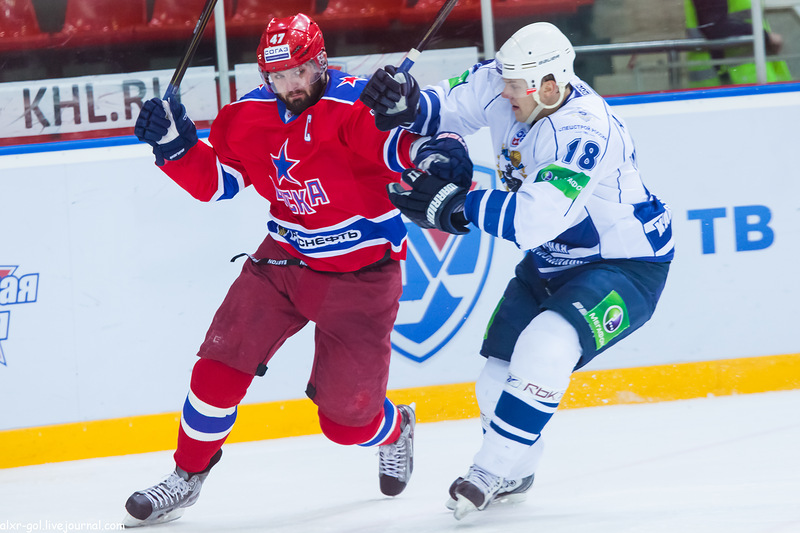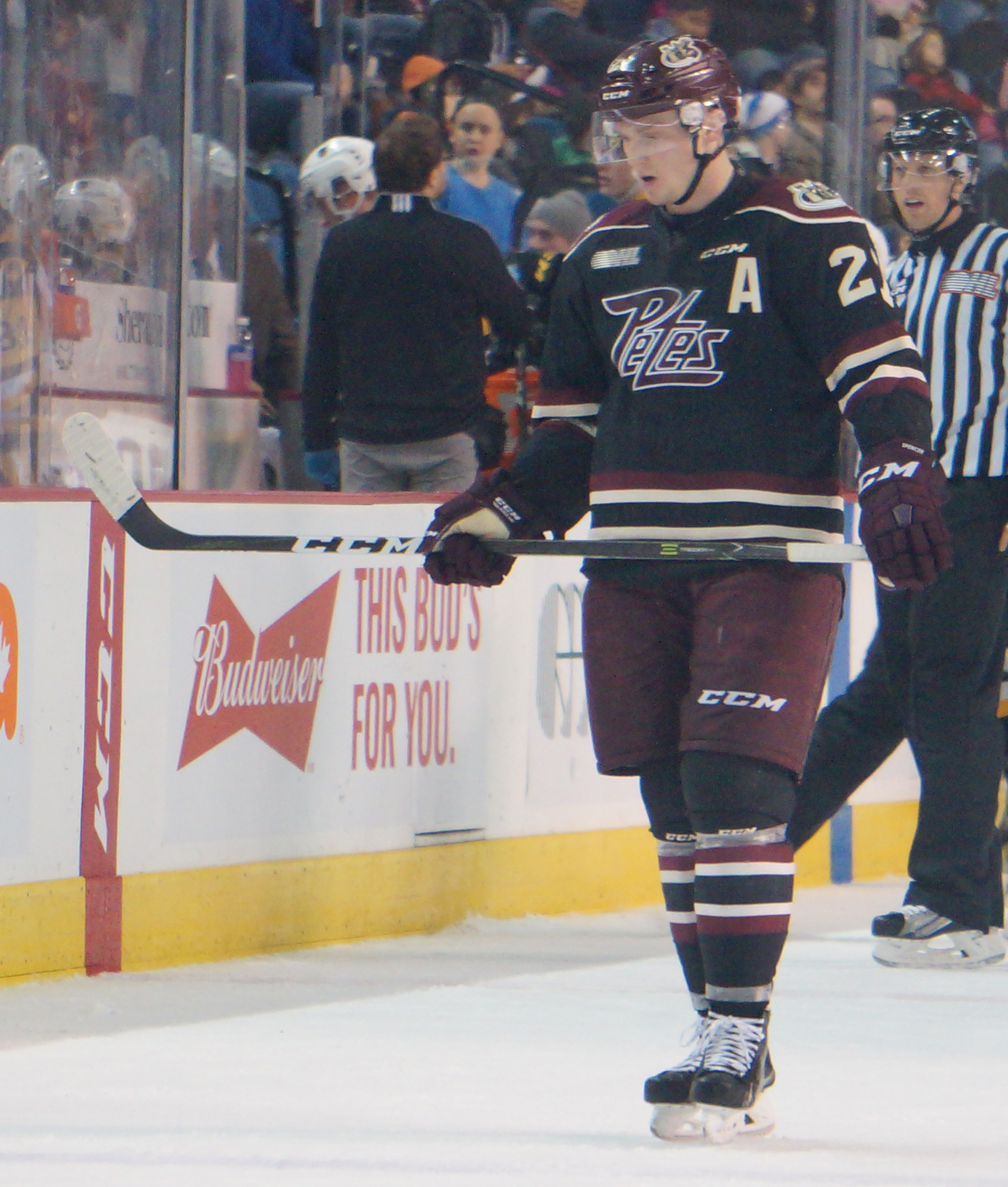By Alec Roberson
Following the conflict in Ukraine, on March 7, 2022 the NHL announced that it was suspending its memorandum of understanding (“MOU”) with the Kontinental Hockey League (“KHL”) in Russia covering transferability of players between the leagues. The NHL also directed its teams to cease communication with any KHL teams or player agents based in Russia. So does that mean Russian players can’t come to the NHL for the foreseeable future? What is the MOU and how does it work under normal circumstances between these leagues? Let’s take a look.
Background of the NHL/KHL Relationship
The NHL has a different relationship with each league around the world when it comes to player transferability. Whether it’s the SHL in Sweden, Liiga in Finland, or the KHL in Russia, each relationship is unique.
Historically, there was not a lot of direction or guidance covering the transfers of players between the NHL and KHL. At one time there was an actual player transfer agreement between the NHL and the Russian Superleauge (predecessor to the KHL) but it ended in 2004. In addition, there was an IIHF player transfer agreement at one time but the Russian Superleague was not a party (nor did it last very long).
NHL KHL Transfer Disputes….
This uncertainty led to many contested player transfers. Pittsburgh signing Evgeni Malkin following his draft and Alexander Radulov going back to Russia while under contract with the Nashville Predators are a few notable examples. If you want to read more about those situations, there are good overviews here. While this article won’t go too in depth on those disputes, they are worthy of mention. They show that without a transfer agreement (or at least a clear understanding) between the leagues there is really no direction on player transfers or the ability to enforce interference with contract claims, even if agreed to by local courts or the IIHF.
As exemplified above, it could be like the wild west when it came to player transfers between the NHL and Russian Superleague/KHL.
The NHL/KHL MOU
In 2011, the NHL and KHL entered into a MOU to govern their relationship on player transferability and resolution for disputed transfers. Among other specifics, the overall purpose of this MOU was to prevent poaching of players under contract by one league from another.
Terms of the MOU
The NHL and KHL have extended their MOU over time and it largely provides as follows:
- The NHL and the KHL are to exchange data on the players currently under contract in their respective leagues. Such data should include the player’s full name, contract expiration date, birth date, club or team, and the player’s status. Upon the demand of either league, a copy of the player’s contract shall be provided.
- Each league must update its contract status database weekly.
- Both leagues are to exchange free agent lists.
- Each league is to fully respect the contracts of the other league. Players under a contract with a team from one league cannot fulfill any obligation to a team in the other league. This means that for a player to transfer leagues, his contract in his current league must be terminated first.
- For any dispute or conflict based on the subject of the MOU, each league shall appoint their representatives to hold negotiations.
- Prior to those negotiations, the leagues shall provide all documentation related to the player’s signing of a contract with any team.
- Toronto or New York are to be the venue for official negotiations between the leagues.
- The NHL and KHL shall do everything in their power to reach a consensus regarding players’ contract disputes, including labor disputes. If no consensus is reached, each party reserves the right to act in the way it deems appropriate in such circumstances.
Benefits of the MOU
This MOU, and the extensions thereof, does a number of beneficial things for both of the leagues. For one, it puts both parties into a framework for how to consider and analyze party transfer disputes before and after they arise. The teams benefit by knowing that their players will not just jump ship while they are under contract and go to the other league. For KHL players drafted by NHL teams, this understanding means that those players must terminate their contracts with their KHL teams before coming over to the NHL. NHL teams retain the exclusive right to sign any players outside of North America for four years from when they were drafted pursuant to Article 8 of the NHL’s CBA. Keep in mind that due to the NHL/AHL relationship there could be circumstances where AHL teams reach deals with players coming from the KHL and vice versa as well.
The MOU also intends to take politics (somewhat) out of the relationship for the sake of the member teams and the players. Of course, there appears to now be circumstances that perverse the supposed non-political aspect of the MOU.
How Effective is the MOU?
Now that the NHL has said it will not honor the MOU with the KHL, it leads to the question: is the MOU actually binding? And if it is not, what is its purpose?
MOU versus a Contract
It is very important to remember that a MOU is not the same thing as a contract. A MOU is a written document among parties that outlines the understanding of their relationship on a particular subject. It carries with it that each party intends to act in good faith towards one another regarding the terms of the MOU. It is not legally binding. A contract, on the other hand, is actually legally binding as something of value passes from each party to the other in what is known as consideration. A contract is typically more detailed and specific than a MOU. Under a lot of circumstances, a MOU can serve like a letter of intent in a purchase/sale arrangement where the parties intend to contract but aren’t there yet.
MOU versus Player Transfer Agreement
When the MOU was extended in 2014, KHL president Dimitry Chernyshenko stated “Over the last few years a number of issues have arisen concerning relations between the KHL and NHL, and we have yet to find a compromise which is fully satisfactory for our league. We will continue to work toward this goal and strive to reach a far better level of cooperation with our friends across the Atlantic.” This statement shows that the MOU is not perfect, but is a good place to which the leagues can operate together. There was talk of the leagues reaching an actual player transfer agreement around 2015. This agreement would have allowed transfers between leagues for players even under contract if a transfer fee was paid. This is how most agreements between leagues generally work. The leagues never reach such agreement and instead continued extending the MOU.
Under the framework of what an MOU really is, the MOU serves as an intent to operate fairly under its terms when it comes to player transferability. Generally, the leagues involved take it seriously knowing how important it is to have a fair arrangement for players to move between leagues for all involved. Not to mention just having good relationships between these leagues is beneficial from an exposure and business standpoint. With that said, if there is some compelling reason to suspend the MOU, either league is free to do so from a legal standpoint. That is what the NHL has done.
What does the Suspension of the NHL/KHL MOU Mean?
So with the MOU currently suspended by the NHL, it does not mean that Russian players cannot come play in the NHL. It also does not mean that NHL teams cannot speak with North American certified player agents representing Russian players. However, what it DOES mean is that NHL teams will have a much more difficult time assessing the status of Russian players’ contracts and vice versa. The NHL stated that it will still respect the current and future contracts of KHL players, but that the communication aspects of the MOU are suspended. Not having the requirements, or even ability, of constant communication between the leagues will make it much more difficult for teams to assess their options.
Other Governing Documents – the NHL’s CBA
Outside of the MOU, the NHL’s CBA does address (somewhat) player transfers with international leagues. In addition to the rules governing the time period to sign drafted European players, this includes, among other things, loans to teams in other leagues in Section 11.19 of the CBA. In essence it says that player contracts in the NHL can include provisions allowing for loans to other leagues BUT that all such loans are subject to any transfer agreements in place between the NHL and that league. If agreed to by all parties, it appears possible that a loan could occur between the NHL and KHL. However, if one party persuaded the player to leave his team, even in a loan scenario, there could be a potential for issues. This may go against the MOU’s provision on respecting each other’s active contracts.
In addition, Article 11 of the NHL’s CBA provides that all standard player contracts are to be registered with the Central Registry of the league and approved by the league. Under Section 11.20 of the CBA, if any such contracts are submitted to be registered and the league has a “reasonable basis” to believe such a player is subject to a contract outside of North America, the league may reject the registration. Section 11.20 of the CBA lays out the procedures for such rejection and also provides that any of the terms of that Section are subject to any player transfer agreement between the NHL and the applicable league in question. This would give the NHL the power to reject an NHL contract if a player was under a KHL contract and such signing would violate the MOU with the KHL.
Concluding Thoughts
While there appears to be some aspects of the MOU in place (i.e. honoring each others’ contracts), we will have to wait and see how this shakes out. With the NHL generally considered the best league in the world and the KHL generally considered the second best in the world, there is an interest for a mutually beneficial relationship, but also a sense of competition. It is no secret that many of the best players in the world, as well as NHL and KHL teams, have benefited from a clear system of transferability between the leagues. Even with politics supposedly taken out of the NHL/KHL relationship, it may take some time for the leagues to get back in good communication, and definitely some time before a player transfer agreement can be negotiated.
While this outlines the NHL/KHL relationship, stay tuned as we take a look at the NHL’s relationship with other European leagues in future articles….
Post image attribution: By: Александр Головко, CC BY-SA 3.0 https://creativecommons.org/licenses/by-sa/3.0, via Wikimedia Commons




